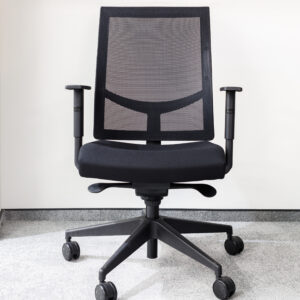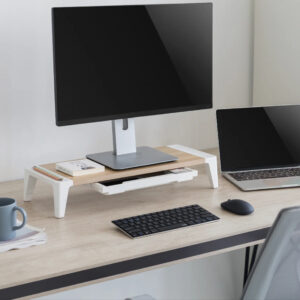Setting Up Your Workstation for Ergonomic and Musculoskeletal Health
A well-designed workstation is not just about aesthetics; it’s about promoting your physical well-being while you work. Poor workstation setup can lead to discomfort, fatigue, and even musculoskeletal disorders (MSDs) over time. By following ergonomic principles and making simple adjustments, you can create a workspace that supports your body and enhances productivity. Here’s how to set up your workstation properly for ergonomic and musculoskeletal health:

1. Start with the Chair: Your chair is the foundation of your workstation. Choose a chair that provides proper support for your lower back (lumbar region) and encourages good posture. Adjust the height of the chair so that your feet are flat on the floor or supported by a footrest, with your knees at a 90-degree angle. Ensure that your hips are slightly higher than your knees to promote good blood flow.

2. Position Your Keyboard and Mouse: Place your keyboard and mouse close to your body and at the same height as your elbows or slightly below. Your wrists should be in a neutral position, with your hands resting comfortably on the keyboard and mouse. Consider using a keyboard tray or ergonomic keyboard to maintain proper alignment and reduce strain on your wrists.

3. Adjust Your Monitor: Position your monitor directly in front of you at arm’s length away, with the top of the screen at or just below eye level. This helps prevent neck strain and encourages you to sit up straight. If you use multiple monitors, arrange them side by side and adjust them to minimize head movement. Consider using a monitor stand or adjustable monitor arm to achieve the optimal viewing height and angle.

4. Organize Your Desk: Keep frequently used items within easy reach to minimize reaching and stretching. Use a document holder to keep reference materials at eye level and reduce neck strain when reading or typing. Keep your desk clutter-free to create a more comfortable and efficient workspace.

5. Take Breaks and Move Around: No matter how well your workstation is set up, it’s essential to take regular breaks to stretch and move around. Sitting for prolonged periods can increase the risk of musculoskeletal disorders and other health issues. Stand up, stretch your arms and legs, and walk around for a few minutes every hour to promote circulation and reduce stiffness.

6. Consider Ergonomic Accessories: Invest in ergonomic accessories such as an adjustable chair, ergonomic keyboard and mouse, monitor riser, and lumbar support cushion to enhance comfort and support. These accessories are designed to help you maintain proper posture and reduce the risk of strain and injury.

7. Listen to Your Body: Pay attention to any signs of discomfort or strain while working. Adjust your workstation as needed to alleviate discomfort and promote better ergonomics. If you experience persistent pain or discomfort, consult with a healthcare professional for guidance and treatment.
